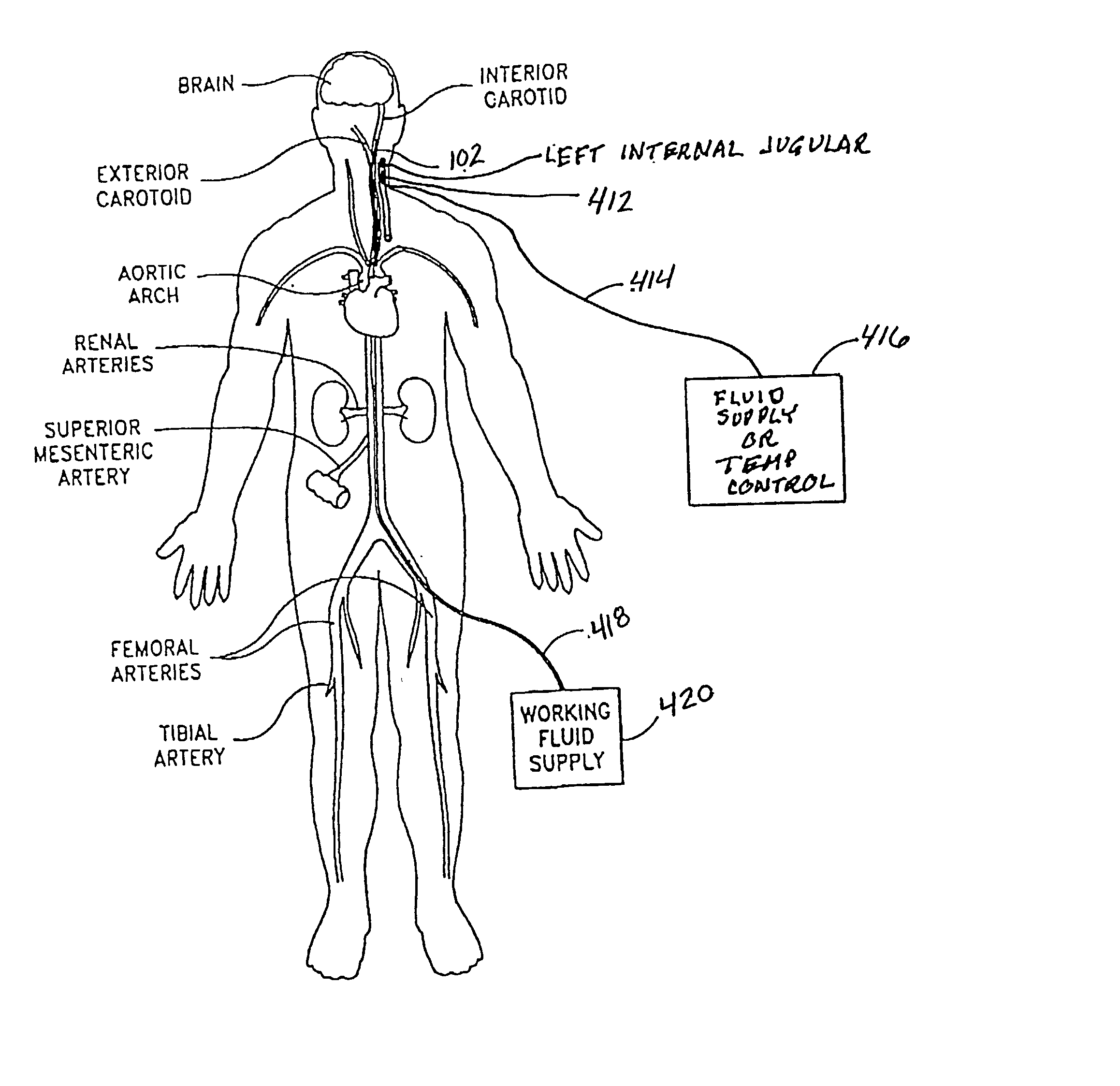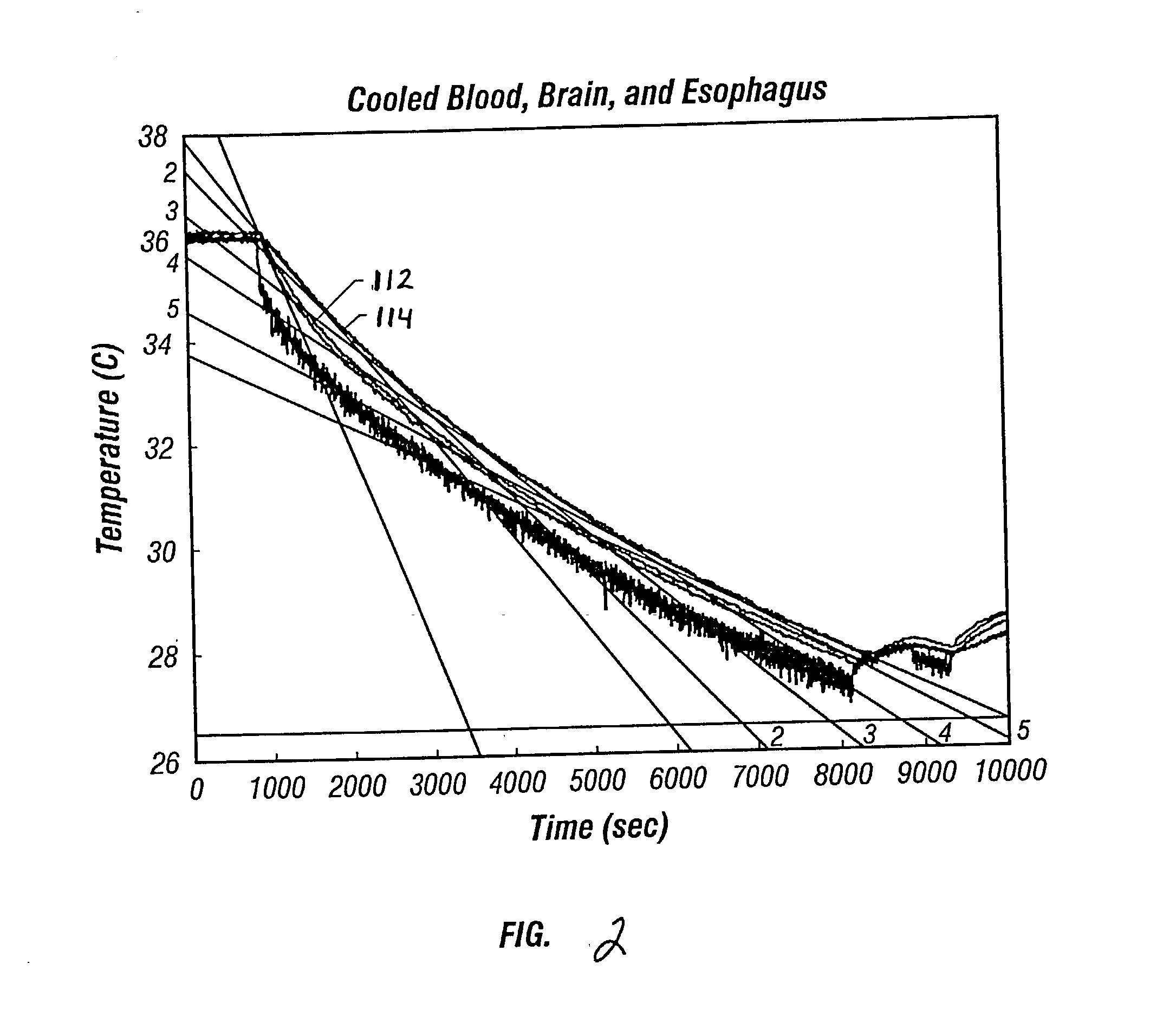System and method for patient temperature control employing temperature projection algorithm
- Summary
- Abstract
- Description
- Claims
- Application Information
AI Technical Summary
Problems solved by technology
Method used
Image
Examples
example two (
NON-DRUG)
[0381] In another non-drug study of the effect of temperature on fibrinolysis, clot lysis in dogs was investigated while varying clot temperatures in a range of 20.degree. C. to 36.degree. C. The dog's temperature was lowered from a normal temperature to a low temperature. A gradual rewarming period followed the low temperature period.
[0382] Enhanced clot lysis was observed at lower temperatures as compared to higher temperatures. In particular, the maximum fibrinolytic activity occurred in the early rewarming period, i.e., from 20.degree. C. to about 25.degree. C. It is believed that this study can be extended to humans, and that fibrinolytic activity can be enhanced at lower temperatures, especially during periods of rewarming.
[0383] An advantage of all of these embodiments of the method is that clot lysis can be achieved in a simple manner and without the need for drugs. An additional advantage results from the reduced temperature of the blood which helps to protect the ...
example three (
SK)
[0390] Researchers have investigated the effect of temperature on the fibrinolytic activity of an SK mixture. In one such effort, clots were treated with a mixture of plasminogen (2 mg) and SK (100 IU) in a total volume of 15 ml PBS. The temperature of the clots was raised from 24.degree. C. to 37.degree. C. These researchers found that heating enhanced the fibrinolytic activity. In other words, heating from a hypothermic temperature to normal body temperature increased clot lysing for clots treated with SK.
[0391] It is believed that such general trends may be extended to patients without lack of accuracy. Patients may be provided with a drug such as streptokinase and may undergo hypothermia using, e.g., one of the devices or methods described above. In particular, a cooling catheter may be placed in an artery supplying blood to a thrombosed vessel. The catheter may include a separate lumen through which the SK mixture may be delivered. A coolant or working fluid may be supplied ...
example four (
TPA)
[0392] Researchers have also investigated the effect of temperature on the fibrinolytic activity of tPA. Clots were treated with 2.5 .mu.g / ml tPA and incubated at various temperatures (e.g., 37.degree. C., 25.degree. C., 10.degree. C., 0.degree. C., and -8.degree. C.). Plasminogen activation was relatively high at low temperatures (e.g., 0.degree. C. or -8.degree. C.) and was much less at higher temperatures. In other words, these researchers found that, for tPA, cooling to a hypothermic temperature from normal body temperature increased fibrinolytic activity.
[0393] As above, it is believed that such trends may be extended to patients without lack of accuracy. In this case, patients may be provided with tPA and may undergo hypothermia using an above device placed in an artery supplying blood to a thrombosed vessel. The catheter may include a separate lumen through which tPA may be delivered. A coolant or working fluid may be supplied to the cooling catheter, causing the catheter...
PUM
 Login to View More
Login to View More Abstract
Description
Claims
Application Information
 Login to View More
Login to View More - R&D
- Intellectual Property
- Life Sciences
- Materials
- Tech Scout
- Unparalleled Data Quality
- Higher Quality Content
- 60% Fewer Hallucinations
Browse by: Latest US Patents, China's latest patents, Technical Efficacy Thesaurus, Application Domain, Technology Topic, Popular Technical Reports.
© 2025 PatSnap. All rights reserved.Legal|Privacy policy|Modern Slavery Act Transparency Statement|Sitemap|About US| Contact US: help@patsnap.com



